27 Jul
The security of our gadgets has become crucial in the quick-paced world of smartphones and mobile connectivity. Our mobile devices store a wealth of personal data; they are more than just tools for communication. Without getting too technical or commercial, let’s look at some doable and basic mobile security best practices to protect our digital lives.

Lock Your Screen:
Setting up a screen lock is the simplest way to protect your mobile device. Using a PIN, password, pattern, or biometric technique such as fingerprint or face recognition, this fundamental step guarantees that your device is only accessible to authorised users.
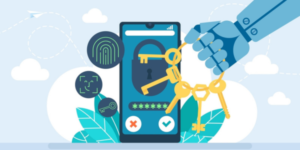
Update Often:
Ensure that the apps and operating system on your mobile device are current. Security patches that address vulnerabilities found by developers are frequently included in regular updates. To guarantee that you can easily take advantage of the most recent security improvements, set your device to receive updates automatically.
Conscientious App Installation:
Occasionally having fewer apps is preferable to having more. Install and download apps only from reputable sites, like official app stores. Before installing the app, read reviews and make sure the permissions are set. Third-party websites shouldn’t be used to download apps because they present serious security risks.

App Permissions:
Allowing permissions to apps should be done with caution. Certain applications might ask for access to more information than is required for them to work. Before granting any permissions, go over and comprehend the ones that the app is requesting. It is advisable to revaluate installing an app if its requests appear excessive or unrelated to its intended use.

Protect Your Wi-Fi Connection:
Although public Wi-Fi networks can be handy, there are security risks associated with them. Steer clear of using public Wi-Fi to access sensitive data or conduct financial transactions. Consider utilising a virtual private network (VPN) to encrypt your connection and provide an additional layer of security if you must use public networks.
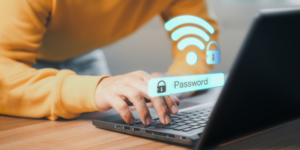
Beware of Phishing:
Phishing is a real threat that can occur via text messages, social media, or even apps. It is not just limited to emails. When responding to unsolicited messages by clicking on links or giving personal information, exercise caution. Sensitive information is never requested by reputable organisations via unsecure channels.
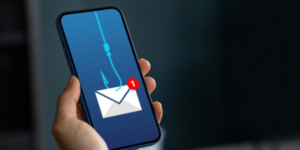
Turn on Find My Device:
Most smartphones have built-in tracking capabilities. Make sure your device has “Find My Device” or a comparable service enabled. If your phone is lost or stolen, this feature can help you find it. Some services even let you remotely wipe your device to safeguard your data.
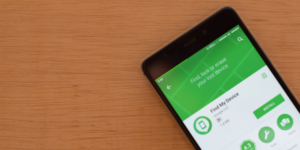
Employ Strong Passwords:
Using strong passwords are essential for mobile security, just like they are for computer security. Instead of using passwords that are simple to figure out, think about creating a passphrase, which is a string of words that is simple to remember but difficult for outsiders to decipher.

Frequent Backups:
Make sure your mobile device gets regularly backed up. This ensures that you won’t lose vital information in the unlikely scenario that your device is stolen, lost, or compromised. Devices running iOS and Android have the ability to automatically backup data to cloud services.

Log Out of Accounts:
Develop the habit of logging out of any apps or websites that ask for login information after you’ve finished using them. Prevent unauthorised access with this easy step, especially in case your device ends up in the wrong hands.
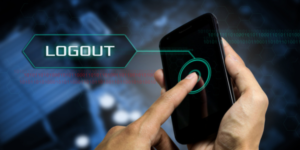
Become knowledgeable:
Keep up with the most recent threats to mobile security and recommended procedures. Being aware of your surroundings can help you safeguard your gadget. For up-to-date security advice and updates, subscribe to reliable sources.

Keep It Physical:
Pay attention to your immediate environment. To keep prying eyes from seeing your screen, use physical privacy screens and refrain from leaving your mobile device unattended in public areas.
Protecting your personal information in the ever-changing world of mobile technology can be achieved by following these simple security precautions. The key to mobile security is to develop thoughtful habits that make using the internet safer. Security doesn’t have to be difficult. We can take advantage of mobile connectivity’s advantages while feeling secure about the security of our devices by adopting these habits into our daily lives.
In the digital realm where smartphones roam,
A tale of security, let’s make it known.
No complex terms or marketing spree,
Just simple practices to keep your phone free.
First, a lock on your screen, a secret key,
PIN or pattern, secure it wisely.
Updates, like a guardian unseen,
Keep them current, your device pristine.
Apps, be mindful, from trusted grounds,
Reviews in hand, explore safe bounds.
Permissions, a dance, only grant the needed,
For privacy’s sake, stay unimpeded.
Wi-Fi, a web where dangers may sway,
Public domains, caution on display.
A VPN cloak, your shield in the air,
Encrypt your data with the utmost care.
Phishing whispers, a deceitful call,
Links and messages, don’t let them enthral.
Find My Device, a beacon so bright,
Lost or stolen, reclaim your device’s light.
Passwords, strong and unique,
A safeguard fortress, not for the meek.
Backup whispers, a digital song,
Protect your data, even when things go wrong.
Log out, a bow, when your session’s complete,
Secure the gates, a habit sweet.
Education, a wise companion near,
Stay informed, banish any fear.
Physical care, don’t let it roam,
Your mobile, a treasure, keep it at home.
In this digital dance, a secure prance,
Mobile safety, a simple, mindful stance.
In this rhyming ode to mobile security,
No jargon or marketing, just a lyrical purity.
Follow these verses, a guide so true,
Your digital journey, secure and through.
